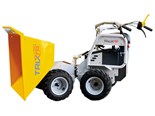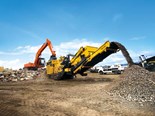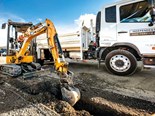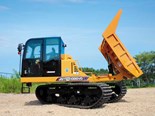Special feature: Chatham Islands
It might be one of our nearest island neighbours, but for most Kiwis, the Chatham Islands remain a bucket list addition that never gets ticked
 |
|
The Holden event was the first-ever motoring launch held in the Chatham’s
|
What looks like a mere scrap of land on an atlas actually reveals itself to be a decently-sized place once you’re there—966km² or thereabouts of sweeping coastal plains, lagoons and, most impressively, craggy peaks offering up glorious vistas.
To give you an idea, the locals reckon the Pacific island of Rarotonga would fit snugly into Te Whanga Lagoon, which helps dictate the vaguely triangular shape of the main island.
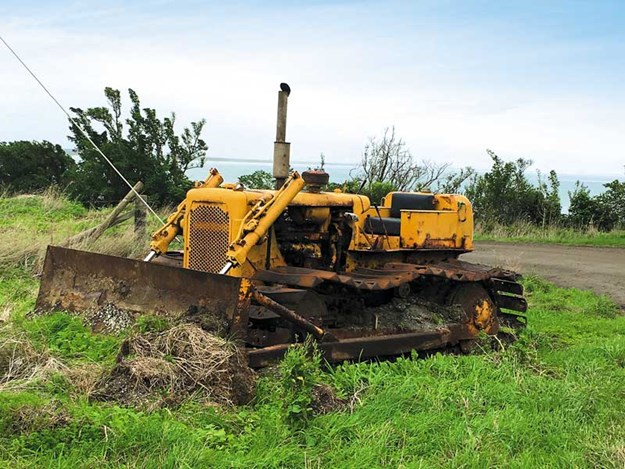 |
|
Dilapidated machines can often be spotted in several places on the island
|
Another surprise is just how extensive the roading network on the main island is. As I was part of a group of journalists attending a Holden event (the first-ever motoring launch held in the Chatham’s and, for all but one of the models presents, the first time the likes of a Holden Acadia, Equinox and yes, even a Commodore, had ever driven the island’s roads), we certainly covered a few kays.
Roading network
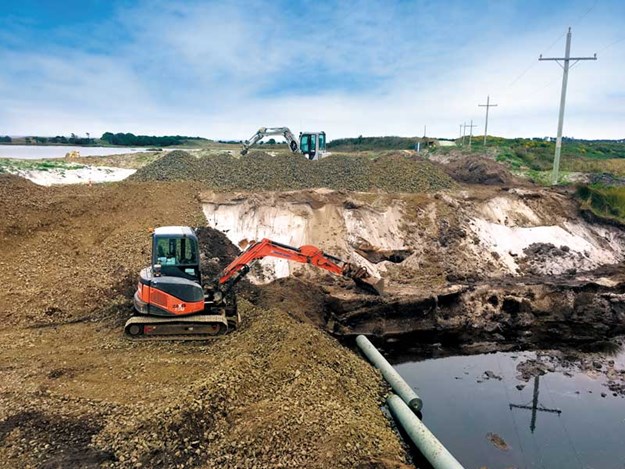 |
|
The Fulton Hogan staff operates a reasonable-sized machine fleet
|
Several hundred kilometres were travelled across three days, ensuring assembled media got to explore every corner of the place.
Aside from a short crisscross of tarmac in the main settlement of Waitangi (home to the post office, medical centre, general store—or "Three Square" as the locals call it—and most importantly, the pub) the roads are all metalled, but are all in a surprisingly good state of groom.
.jpg)
This is due to a revolving cast of Fulton Hogan works staff, which operate what appears to be a reasonable-sized machine fleet from their large depot in Waitangi.
Cat graders and crawler excavators, Dynapac rollers, and Takeuchi mini excavators were some tools of the trade spied sitting dormant on drainage works near the airport (it was a Sunday), while in town and in the occasional paddock, all manner of tractor brands are well represented, from Massey Ferguson to Ford and even a big Deutz-Fahr working down at the lifeblood of the island—the recently extended cargo wharf.
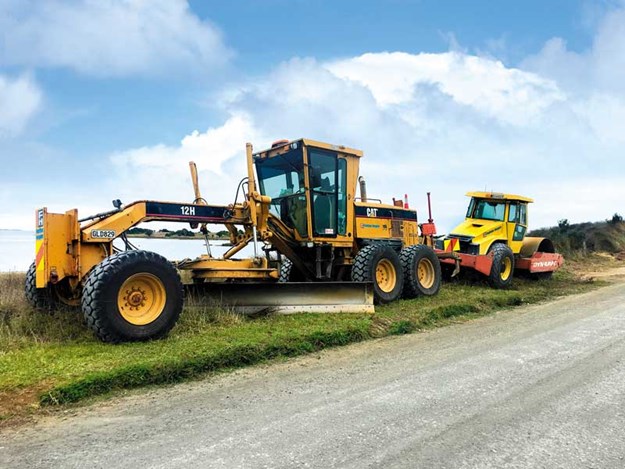 |
|
Caterpillar graders and Dynapac rollers are part of the fleet
|
What was perhaps more interesting was the prominence of old machinery that had done its dash still sitting around the place; many examples seemingly resting at peace where they last fell. Yellow bulldozer sheet metal poking out from scrub is a relatively familiar sight along the main roads.
With the idea of salvaging and sorting scrap metal completely undermined by the massive costs involved in getting it off the island (shipping a passenger vehicle to or from the Chatham’s will set you back around $3000 each way), there’s no appetite or market for containerised scrap.
 |
|
Bulldozer metal poking out from scrub is a relatively familiar sight along the main roads
|
Thus, the island is a bit of a dilapidated machine enthusiast’s theme park. I can hear Deals On Wheels’ resident restorer Lyndsay Whittle searching Air Chatham’s flight times right now.
Deep-sea fishing
 |
|
A potential restoration project for DOW’s Lyndsay Whittle perhaps?
|
The big industry out here is, obviously, fishing. It’s the kind of place where you can fill a bucket with paua or kina in a matter of minutes. The hotel owner reckoned paua could be had from the rocks immediately in front of the reception area, although, I never saw anyone out harvesting.
Further out into the Roaring Forties beyond the relative shelter of Petre Bay, a hard-working deep-sea fishing fleet continually treks into the perennial gale for blue cod and crayfish, which keeps the Chatham’s economy ticking.
Cray pots piled up in neat stacks at the roadside are a familiar sight around the island; the fact that each pot costs around $1000 and larger boats might have up to 300 of them onboard is a sobering reminder about just how big the investment in fishing is for locals here.
Despite the tasty-looking breaks, there’s no diving or surfing though; the Chatham Islands are home to one of the largest White Pointer breeding grounds in the world. Go surfing here and you’ll likely be flying home as bits in a box.
Speaking of windswept ocean, a drive out past the Tommy Solomon Memorial Statue towards Owenga on the south coast of the island gives us a tantalising view of the only other inhabited island in the Chatham’s archipelago—Pitt Island.
Revealing itself from behind a curtain of rain and ocean spray for only a few minutes at a time (I’ll admit the theme song from Father Ted involuntarily came into my head), the residents of Pitt have effectively been cut-off from the "mainland" for most of the year after both the main supply boat and the tiny plane suffered semi-mortal mechanical issues within weeks of each other last summer.
The 40-or-so Pitt Islanders are currently awaiting parts to arrive in the Chatham’s for both motors, although, there’s still the process of then getting the parts from Waitangi over to Flower Pot, the main settlement on Pitt.
Our last stop on the island was at one of the few larger working farms in the Chatham’s, out on a spit of land at Kaingaroa at the north-eastern extreme of the island.
Stepping back in time
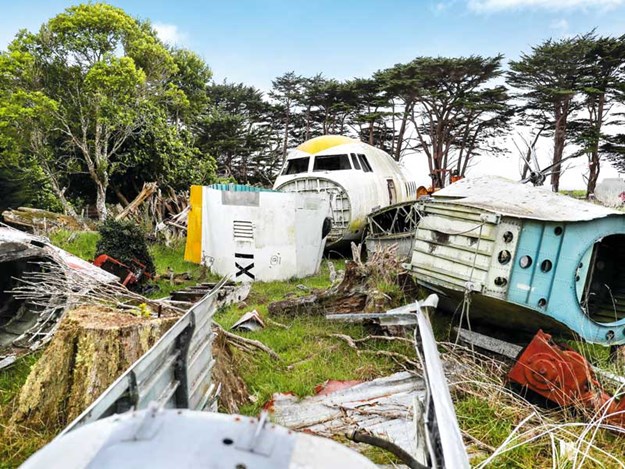 |
|
It’s not just the remains of heavy earthmoving equipment that you find in paddocks out here
|
We weren’t there to admire the cattle beasts though; another expired machine goldmine awaited in and around Jim Muirson’s implement shed, which is also home to the remains of a World War II-era Sunderland flying boat.
In November 1959, the plane struck submerged rocks in Te Whanga Lagoon shortly after landing. The RNZAF deemed its salvaging to be impracticable and expensive, so the fuselage languished in several locations over the next few decades, even being used as a makeshift shed for a time before Muirson established his fledgeling Chatham’s Air Museum.
The restored section of plane is now safely inside an implement shed where it awaits proper refurbishment. The yard surrounding the shed is also home to a number of other planes in various states of dismemberment. It’s hard to know where the pieces of the Sunderland finish and the pieces of a Fokker Friendship that has somehow made its way onto the island begin.
And with air travel in mind, it’s soon time to wing our way up into the mists that often surround the Chatham Islands and make the two-hour flight back to Wellington.
With ticket prices being comparable with the cost of a trip to Melbourne or Fiji, it’s easy to see why most Kiwis don’t consider an intrepid voyage eastward. But even if you’re not purely going to check out decaying metal in fields, the Chatham Islands represent real adventure in a weatherworn and characterful landscape. And the seafood at the pub is fantastic, too.
Find construction machinery for sale in NZ
Keep up to date in the industry by signing up to Deals on Wheels' free newsletter or liking us on Facebook.

